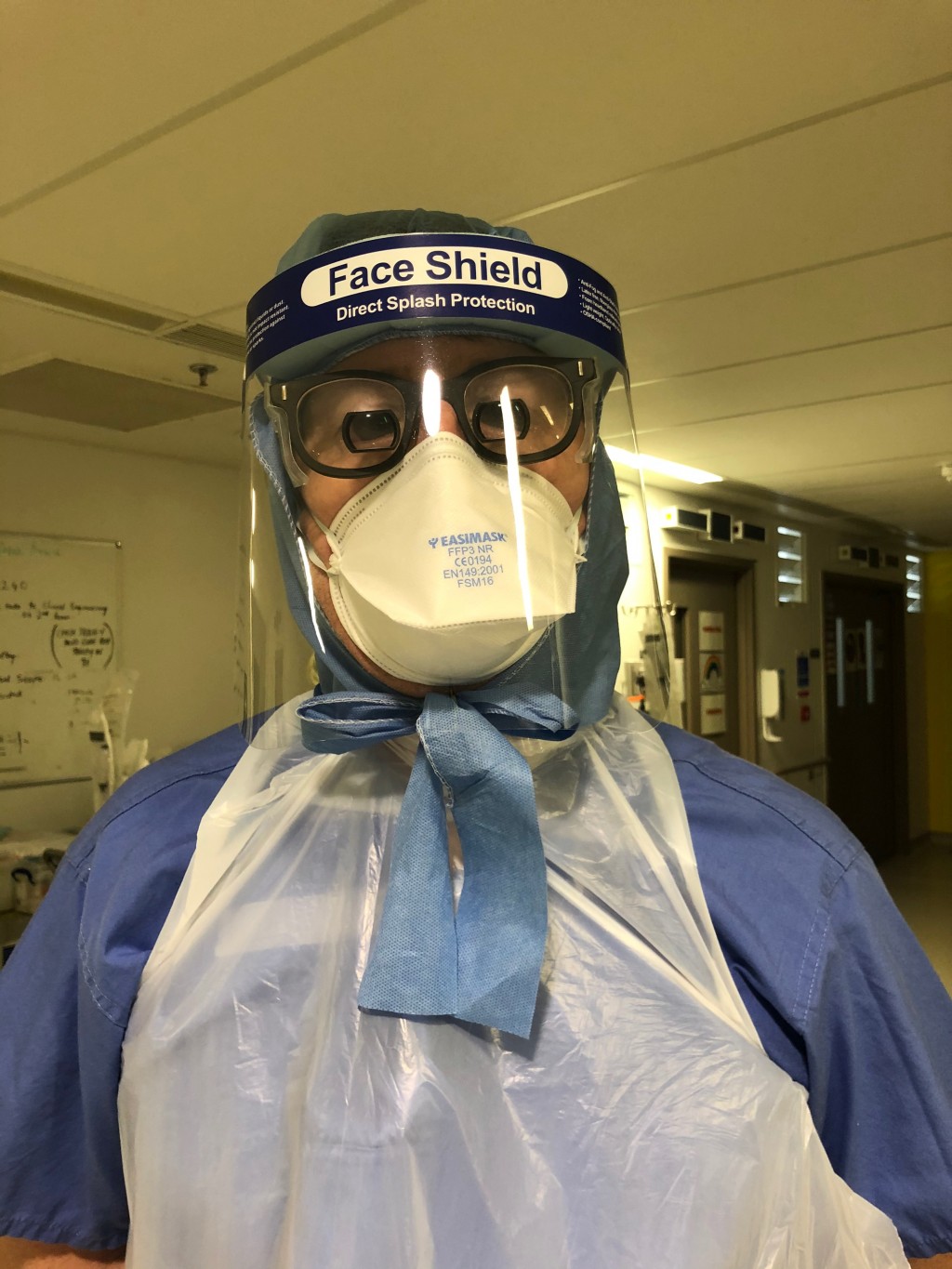Personal Protection Equipment
Introduction
The NHS Donning and Doffing Video
This a review of PPE
https://qmplus.qmul.ac.uk/pluginfile.php/1993326/mod_book/intro/rr619.pdf
1. Introduction
Introduction
This possible the most important video of the whole course !

Please remember that whilst as consultants we care very much for you, it is your responsibility to make sure that you approach all patients with appropriate levels of protection.
There are always people around who have done it before, and the trick really is to make sure that you are watched putting it on, and buddy up with someone to make sure there's no skin open.
The virus spread by droplets, is present in sweat, tears, blood, urine, faeces. The documented case of the ophthalmologist who faced somebody on a slit lamp, and his first sign of infection was conjunctivitis.
this is why SH in the above picture was completely covered and this is before gowns were put on.
what you will find is the mask fits very well, and filters what you breathe, the mask is a recognised surgical mask, and as such provides very good protection. People in the area that you work will have a better idea of what you need to use.
If you're entering a very exposure prone area, for around people doing aerosol generating procedures, then you need to make sure your neck is covered. A good tip is to put a plastic apron and get someone to tie the knot very high.
other tips not publicised are to tape the the at the front of your down to seal the edges together.
If you are involved in a risky procedure, then following you need to shower and wash your hair thoroughly. The trust has a supply of donated conditioner and shampoo and body stuff.
The NHS Donning and Doffing Video
This a review of PPE
https://qmplus.qmul.ac.uk/pluginfile.php/1993326/mod_book/chapter/108138/rr619.pdf